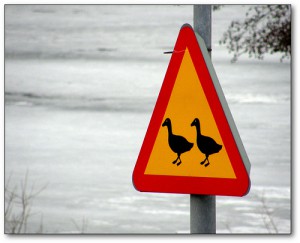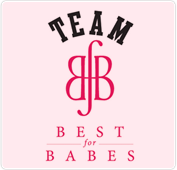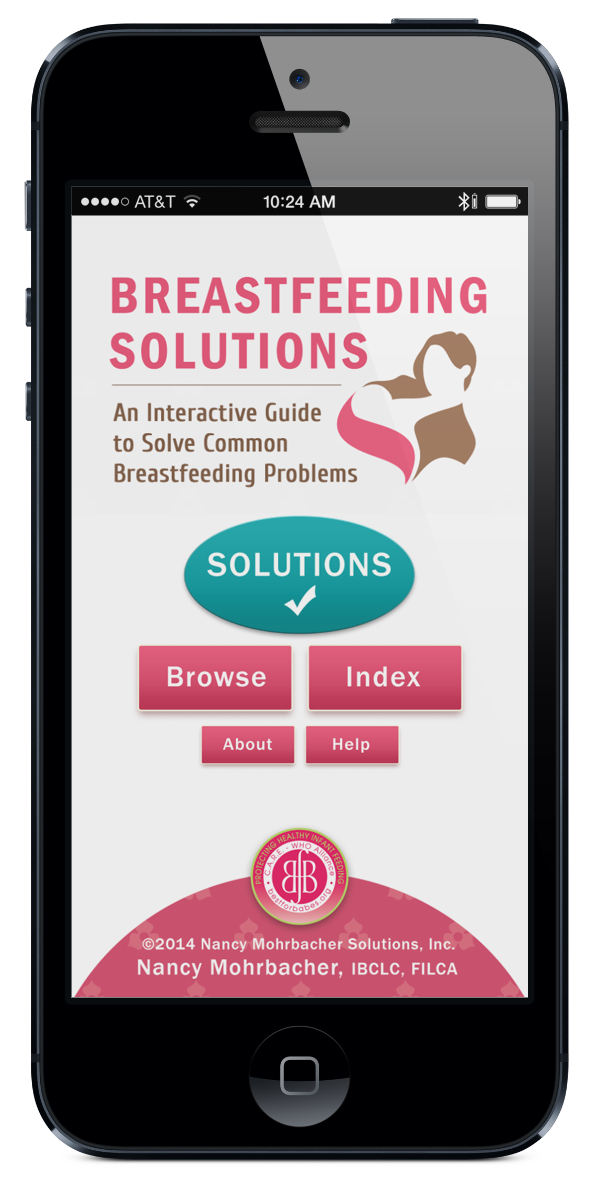If it looks like a duck and walks like a duck, it must be a duck right? Not necessarily if that “duck” is thrush in a breastfeeding mom. Thrush (a yeast infection most commonly caused by the fungus Candida albicans) is a common diagnosis whenever a mother presents herself to a doctor with nipple or breast pain. Unfortunately, thrush is not as common as many health care providers seem to think, and many women suffer needlessly due to misdiagnosis. There are countless stories of mothers being treated repeatedly for “recurrent thrush”. These women struggle, sometimes for weeks or even months, with painful breastfeeding. They usually try numerous different treatments but never find complete relief from the discomfort.
Here’s a common scenario: Your nipples are sore and cracked and you have shooting pain through your breast while nursing . You go to the doctor and he diagnoses thrush, gives you a prescription for Nystatin (an antifungal) and sends you on your way. After a week, the Nystatin doesn’t seem to be helping so you try Gentian violet on the advice of a friend, and things seem to improve. Two weeks later however, the pain is back, so you go back to the doctor and he prescribes Diflucan (fluconazole), assuring you that this will get rid of the yeast. There’s minimal change after a week, and you find yourself on and off Diflucan for weeks, diagnosed with “resistant thrush” and desperately looking for answers. What’s going on and why can’t you get rid of the pain?
The symptoms attributed to thrush include burning nipple pain, itching, shiny, flaky skin on the nipples/areola, and deep or shooting pain in the breast. The problem with these symptoms, is that there are many other possibilities besides thrush. These include (but are not limited to):
- poor latch
- sucking issues in baby
- tongue tie
- vasospasm
- Reynaud’s phenomenon
- eczema on the nipple
- allergic dermatitis
- psoriasis on the nipple
- damage from pumping
- bacterial infection
By far, the most common cause of nipple and deep breast pain is poor latch. Any time a mom has nipple or breast pain, the first thing that needs to be looked at is baby’s latch and sucking ability. This needs to be done by someone skilled at breastfeeding assessment. Sometimes a baby’s latch can look “perfect” from the outside, but something is going on inside their mouth that is causing problems. If your nipple looks compressed or pinched when it comes out of your baby’s mouth (like a new tube of lipstick), then something is not right and it needs to be addressed (no matter how “good” it looks from the outside!).
Issues such as tongue-ties and sucking issues caused by birth interventions (such as vacuum, forceps, or C-section), or even muscle tightness due to your baby’s birth or position in the womb, can also cause a lot of pain. Issues such as these are unfortunately often missed however because most health care providers are not trained to look for, or properly assess them. Because of this, finding skilled help is important. If you have been told that your baby’s latch is “fine” but you are in pain and your instincts are telling you that something isn’t right, then keep looking until you find someone with the experience to help you.
If your baby’s latch and suck truly are not the problem, then current research tells us that bacterial infection is a more likely cause of breast/nipple pain then thrush. It had been believed that deep breast pain was caused by yeast within the ducts of the breast (ductal yeast). Current research however calls into question the existence of “ductal yeast” and tells us that bacterial infection (usually Staphylococcus aureus) is actually a far more common cause of nipple and/or deep breast pain. Despite all the fear that exists over using antibiotics because they might cause thrush, some cases of “resistant thrush” actually need antibiotics!
I’m not suggesting that thrush doesn’t exist, certainly it does. However, it is no where near as common as it would seem from the number of women who are diagnosed as having it. The most important point here is this: If it looks and walks like a duck but doesn’t quack or behave like a duck, then it’s time to start looking at who’s pretending to be a duck. In other words: If appropriate thrush treatments don’t solve the problem in a timely manner, it most likely isn’t thrush, and it’s time to look at what else could be causing the pain!
Fleur Bickford is a nurse, lactation consultant, and mother of two. She’s passionate about helping families discover the joys of breastfeeding, birth and parenting, and providing parents with evidence based information. She is a private practice lactation consultant in Ottawa Ontario. You can find more information about Fleur on her website, www.nurturedchild.ca.






This happened to me and I didn’t find out until I took my CLE course last month (4-1/2 years after it happened). I was told I had thrush with my second daughter - stinging pain when nursing and redness/rash on my breast. My doctor gave me Nystatin and said it would clear-up in 7-10 days. I never saw white dots in my daughter’s mouth but he seemed to think he did (it wasn’t my regular GP).
So a week went by, and then another week and another and another. I was sterilizing my breast pump every day (what a pain!).
Then it went away after a month.
Molly Pessl, BSN, IBCLC and my instructor for my CLE course cited a study that stated that 75% of staph is misdiagnosed as thrush. Often no cultures are taken (including in my case), hence the misdiagnosis. I wonder why they don’t take the cultures - too expensive?
Anyways, I’m glad I found out it wasn’t thrush even if it was too late.
I’ve been in this boat!
Had a poor-ish latch to start (my 36 weeker) and Reynaud’s phenomenon (it took weeks to figure this out). I had such severe nipple pain at times, and my nipples were blanched then reddened from the trauma of the latch and the vasospams. Since it was February, the cold was definitely an issue as well; any time I was the slightest bit chilly, I got nipple pain.
We were treated for thrush even tho my babe had no patches and I had no itching or breast pain. In hindsight, this was a good illustration of some HCPs not *really* listening to a person’s symptoms.
What ended up helping after I figured out on my own what was going on was a tincture of time, working to improve the latch and wearing wool breast pads.
Thanks for posting this very informative article!
I’ve read this new research and in retrospect I recognize how many clients were treated by IBCLC and they misdiagnosed yeast/candida infection, and all the aggravation involved for these clients never having the pain go away.
With 20/20 hindsight I now realize it was likely bacterial infections in many circumstances and eventually healed on it’s own time. Since the anti-fungals never changed the status of the pain complaints clients were having.
It pays for all of us who contact with nursing mothers to stay current with research
Thanks for the informative article!
I am currently struggling with this. After weeks of being on nystatin and diflucan for what we thought was thrush(shooting pain, burning,pink nipples. After 2 weeks with no relief, my AMAZING OB/GYN decided to culture my milk to be sure we were infact treating yeast. We were all wrong and shocked when the culture came back as MRSA. We are now on Bactrim twice a day and hoping for a negative culture in2 weeks!! My piece of advice for anyone struggling with “resistant thrush” is to demand a culture.
We are now on Bactrim twice a day and hoping for a negative culture in2 weeks!! My piece of advice for anyone struggling with “resistant thrush” is to demand a culture.
Thank you!!! This is exactly what I went through for months. I just stopped all treatment (after trying some antibiotic ointment) and I was better!! This validated my thoughts about my whole thrush ordeal.
I was diagnosed with thrush when my son was a newborn and I truly believe that I did have it because he was born through yeast and then had several latching issues which caused cracked and sore nipples…I was diligent in treating myself and my son for a few weeks. Needless to say I was still in a tremendous amount of pain! I was on continuous diflucan and my son was on nystatin and then infant diflucan…FINALLY I met with another lactation consultant and she suggested that it may no longer be yeast but that I had Reynaud’s Penomenon…We began treatment for that and within a few days noticed drastic improvement! I continued with three rounds of the medication and at the end of that time was 100% pain free nursing my 4 month old…Now am proud to say we are 15 months and going strong!
Ahah, finally something that reflects my experience! Have scoured Kellymom and La Leche League and countless medical sites and this is the first I’ve seen staph mentioned as a likely culprit. Shooting pain deep in the nipple, dead skin that was white when wet and could be scraped off, cracks that would not heal … I suffered for many months with this, and it was only after oral antibiotics after it developed into mastitis, that it finally went, and stayed gone for months. It is now back, but antibacterial cream seems to keep it under control. The pain had been so great that I doubted I would make it to a year of breastfeeding. Happily, after antibiotics I had wonderful, loving pain-free nursing.
I hope this information gets the wider audience it needs.
Pingback: Thrush Resources : KellyMom
Pingback: BF Chicago Frequently Asked Questions | Breastfeed Chicago
Pingback: ♡♡FEBRUARY HEARTS♡♡ Due in February 2015 , open group all welcome! - Page 981 - BabyandBump